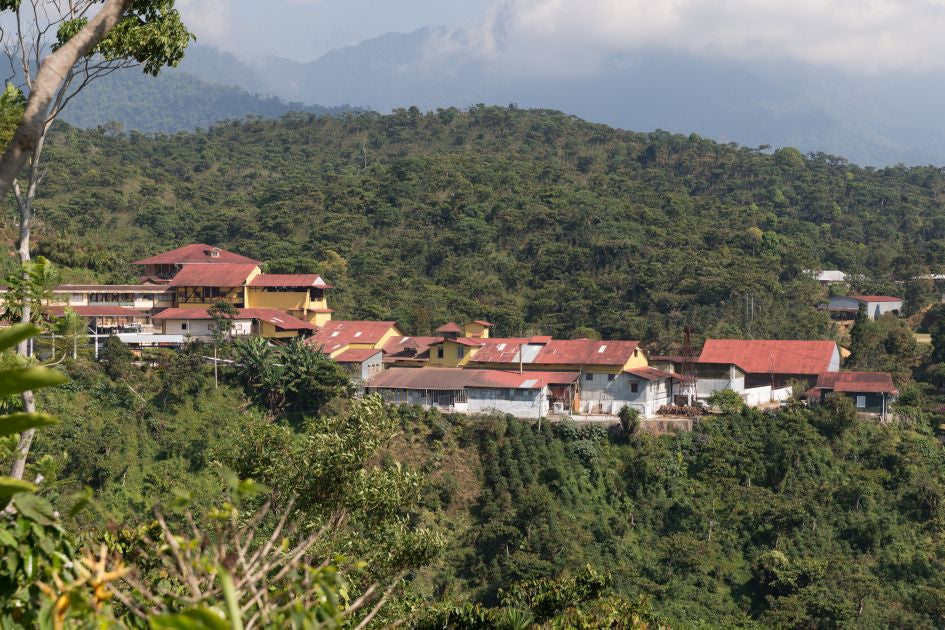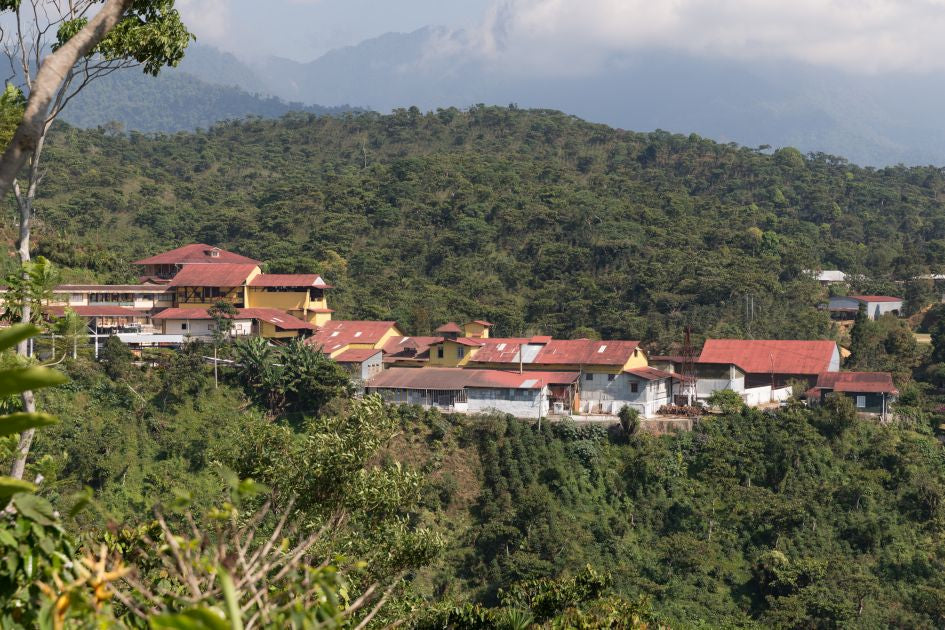
2023 marks our 1st year of working directly with the beautiful Finca Hamburgo, Mexico. Thanks to a chance meeting back in 2015, Ori was able to forge a connection with Tomas Bruno which has since developed and evolved into a brand new direct-trade relationship for us at MB.
Olly, our Roastery Manager, caught up with Tomas Bruno in September 2023 and got his thoughts on all things Mexican coffee, including how they've adapted their methods on the farm over the years and how they are building a strong, solid & sustainable foundation to utilise for years to come.
Q: When / How did you first become involved in coffee growing & exporting?
A: In 2013 I came back from University to start my career in coffee at Finca Hamburgo. I chose to begin with exploring the old farming methods that require less fertilising, supported by our own environment like reutilising coffee cherry pulp, using worms to make a quality compost, utilising natural enemies of coffee diseases and pests (one of them is a wasp that eats the coffee cherry borer) and many other tools and techniques that are available in our area. Some of them were successful that we continue to apply to this day.
In 2015 I went to Germany to visit one of Finca Hamburgo’s customers, stayed there for 2 months learning about roasting and general coffee knowledge, the same course were I met Ori Halup! From there I learned much more about coffee varieties, coffee drying processes, the bases of specialty coffees.
After coming back from Germany I established a coffee roastery in Finca Hamburgo. When that same year’s harvest began, Finca Hamburgo made its first coffee micro lots. After 8 years these two things became our new vision of what my family and I want Finca Hamburgo to become.
Q: How have the Finca Hamburgo farms become established over the years?
By the 1950’s Finca Hamburgo was fully equipped and organised, producing and exporting specialty coffees under its own brand.
In the 1960’s the International Coffee Association established fixed prices for the worldwide coffee trade, this political arrangement disincentivised focusing on specialty coffee in favour of volume production. During these years Finca Hamburgo saw its highest volume of production ever seen. This state of matters ended abruptly in the year 1989 when the worldwide coffee market fixed price was abandoned, coffee prices plummeted drastically, many farms in the region went broke, Finca Hamburgo went broke too.
After the 1989 crash, the people who worked in Finca Hamburgo together with the current owners - my dad Thomas Edelmann Blass and my mom Maria Amalia Toriello - decided to start over with coffee production. The new goal was to produce specialty coffees like it used to be and what Finca Hamburgo was already built for, the equipment and knowledge for specialty coffee was still there. It was the right decision, from that time forward Finca Hamburgo improved the coffee mill and planted new coffee varieties, it also was able to upgrade workers houses and buy better farming equipment.
In 2015 we established a roastery to go for the next step in the coffee chain. By 2023 the roastery expanded, it is now equipped with grinders and a packing station.
Q: How is Mexican coffee doing in the current global market & how resilient are the crops to climate pressures?
Q: How are the farms meeting the growing expectations of organic, ethical & sustainable farming techniques, including workforce welfare?
Q: What does the future hold for coffee from Mexico? And do you have any big plans for your current farms?
We have seen the opening of coffee shops in every city inside of Mexico. That is great news for us farmers and roasters, this gives us the possibility to have a secure cash flow even if it’s of little sells once a week.
Our long term plan is to roast as much of our coffees as possible and to keep good relations with overseas customers like Missing Bean. The more direct-trade, the better!

Q: What makes the coffees that Missing Bean have selected so special? (Red Catuai & Red Bourbon) And how would you recommend brewing them?
My favourite way to brew them is with the Italian moka for espresso, and on hot days it goes perfectly as espresso ice coffee.
Q: How can the general public help to encourage more coffee being produced by people with your attitudes and beliefs?
A: I believe that we must establish constant communication between farmers, roasters and drinkers. Farming coffee is risky and hard, so please recognise our work with good prices that fair to us and to drinkers as well.
____________________________________
You can shop our Mexico coffee and support this amazing industry HERE.
